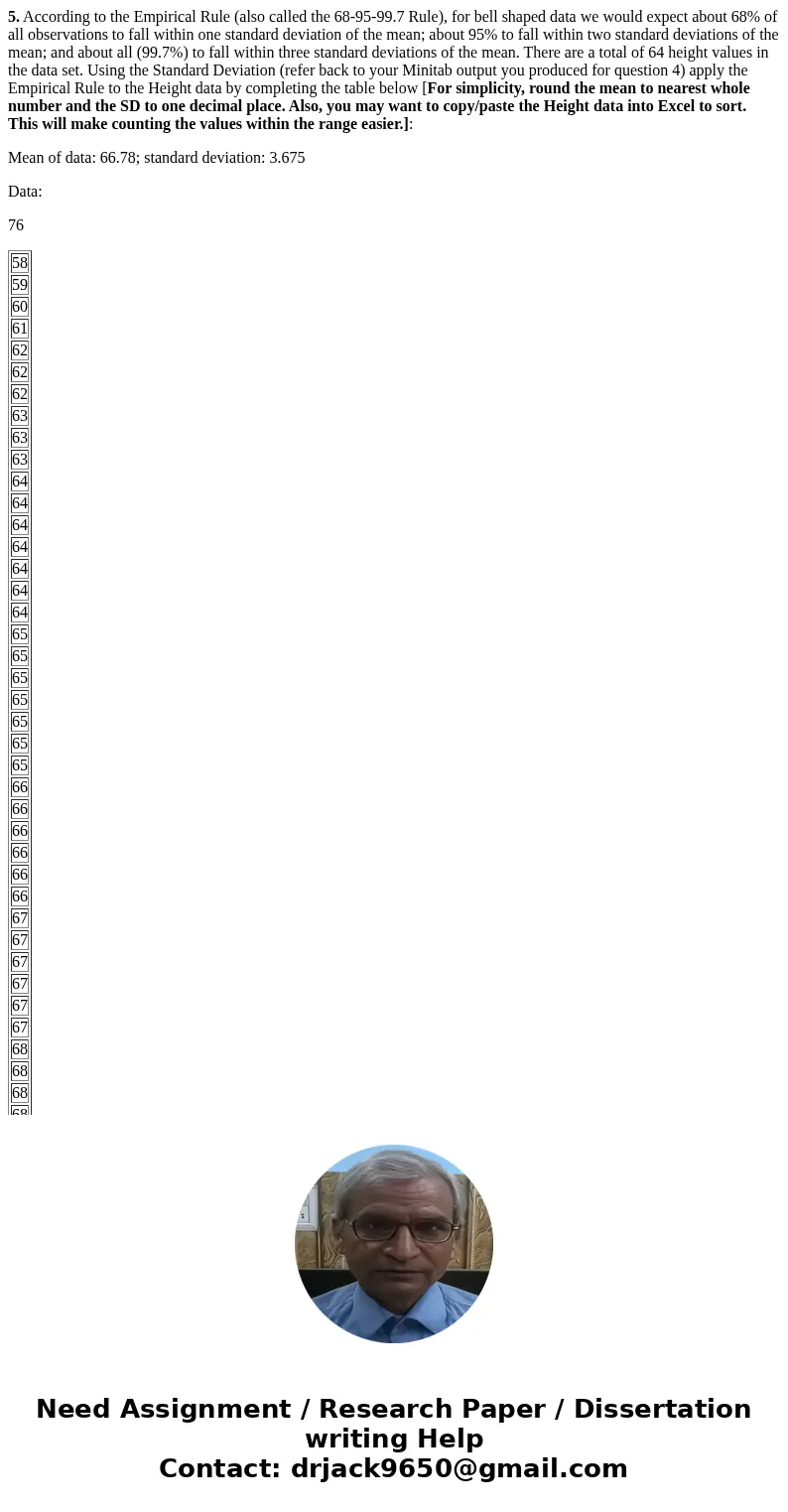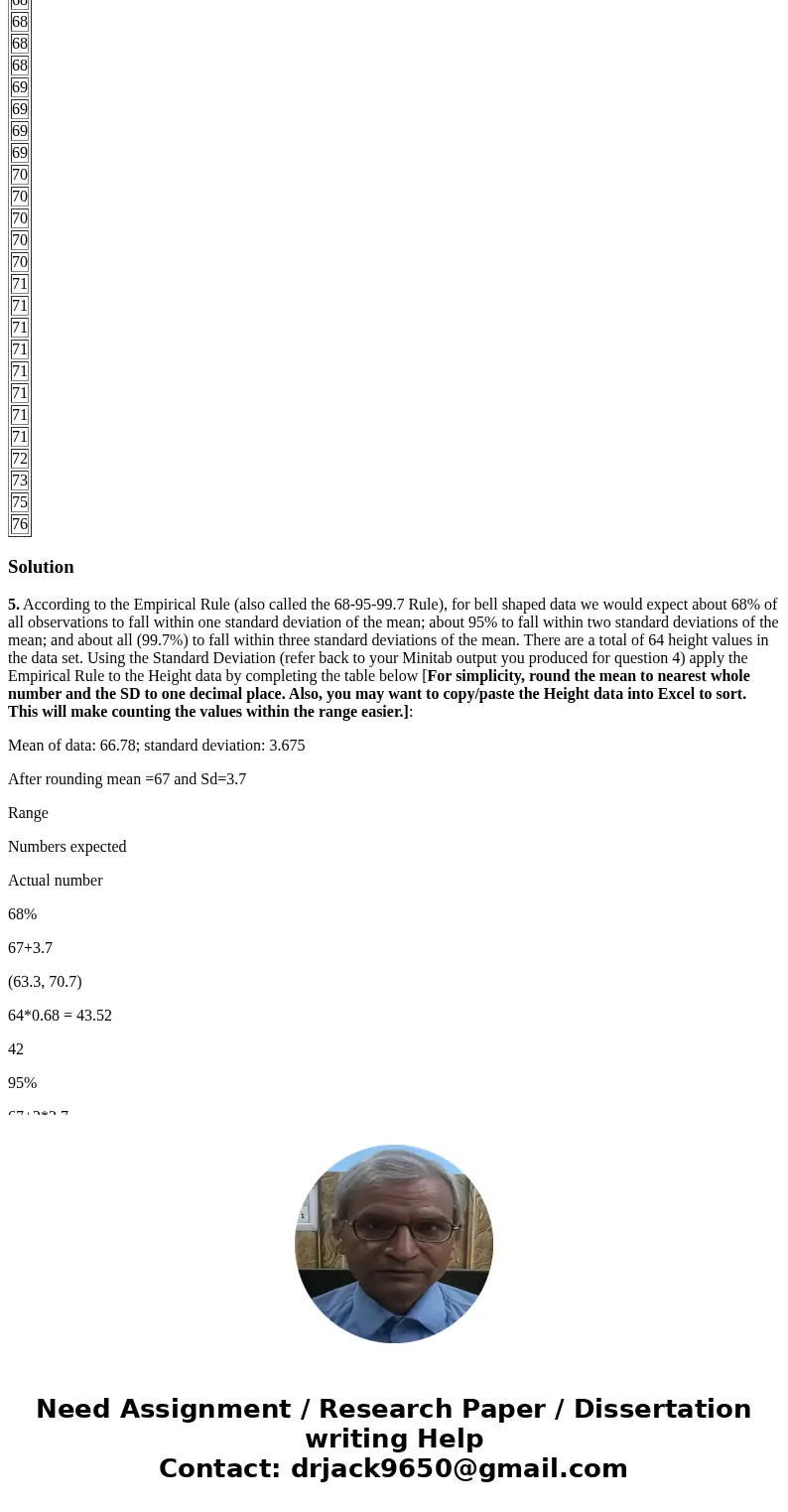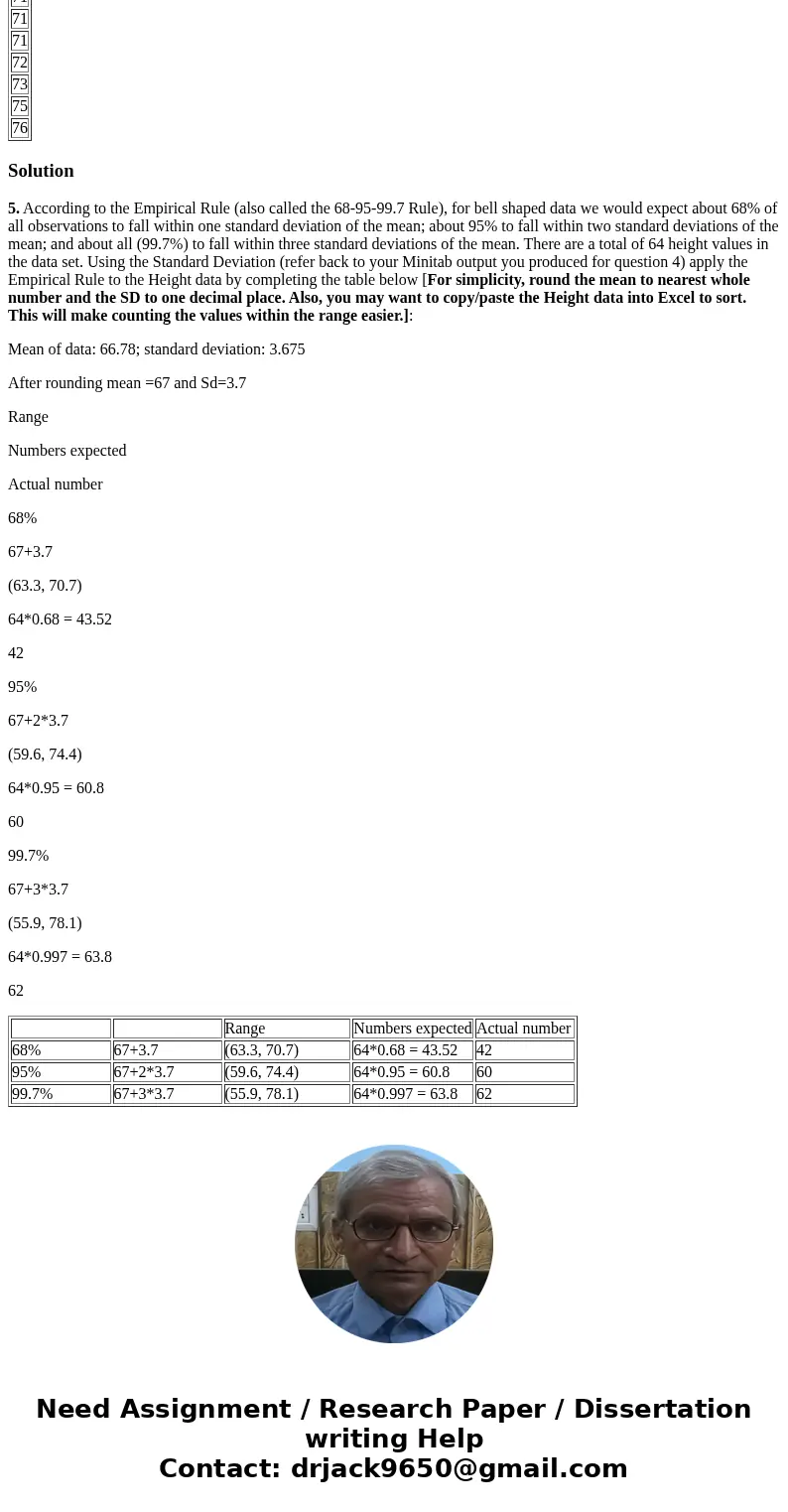5 According to the Empirical Rule also called the 6895997 Ru
5. According to the Empirical Rule (also called the 68-95-99.7 Rule), for bell shaped data we would expect about 68% of all observations to fall within one standard deviation of the mean; about 95% to fall within two standard deviations of the mean; and about all (99.7%) to fall within three standard deviations of the mean. There are a total of 64 height values in the data set. Using the Standard Deviation (refer back to your Minitab output you produced for question 4) apply the Empirical Rule to the Height data by completing the table below [For simplicity, round the mean to nearest whole number and the SD to one decimal place. Also, you may want to copy/paste the Height data into Excel to sort. This will make counting the values within the range easier.]:
Mean of data: 66.78; standard deviation: 3.675
Data:
76
| 58 |
| 59 |
| 60 |
| 61 |
| 62 |
| 62 |
| 62 |
| 63 |
| 63 |
| 63 |
| 64 |
| 64 |
| 64 |
| 64 |
| 64 |
| 64 |
| 64 |
| 65 |
| 65 |
| 65 |
| 65 |
| 65 |
| 65 |
| 65 |
| 66 |
| 66 |
| 66 |
| 66 |
| 66 |
| 66 |
| 67 |
| 67 |
| 67 |
| 67 |
| 67 |
| 67 |
| 68 |
| 68 |
| 68 |
| 68 |
| 68 |
| 68 |
| 68 |
| 69 |
| 69 |
| 69 |
| 69 |
| 70 |
| 70 |
| 70 |
| 70 |
| 70 |
| 71 |
| 71 |
| 71 |
| 71 |
| 71 |
| 71 |
| 71 |
| 71 |
| 72 |
| 73 |
| 75 |
| 76 |
Solution
5. According to the Empirical Rule (also called the 68-95-99.7 Rule), for bell shaped data we would expect about 68% of all observations to fall within one standard deviation of the mean; about 95% to fall within two standard deviations of the mean; and about all (99.7%) to fall within three standard deviations of the mean. There are a total of 64 height values in the data set. Using the Standard Deviation (refer back to your Minitab output you produced for question 4) apply the Empirical Rule to the Height data by completing the table below [For simplicity, round the mean to nearest whole number and the SD to one decimal place. Also, you may want to copy/paste the Height data into Excel to sort. This will make counting the values within the range easier.]:
Mean of data: 66.78; standard deviation: 3.675
After rounding mean =67 and Sd=3.7
Range
Numbers expected
Actual number
68%
67+3.7
(63.3, 70.7)
64*0.68 = 43.52
42
95%
67+2*3.7
(59.6, 74.4)
64*0.95 = 60.8
60
99.7%
67+3*3.7
(55.9, 78.1)
64*0.997 = 63.8
62
| Range | Numbers expected | Actual number | ||
| 68% | 67+3.7 | (63.3, 70.7) | 64*0.68 = 43.52 | 42 |
| 95% | 67+2*3.7 | (59.6, 74.4) | 64*0.95 = 60.8 | 60 |
| 99.7% | 67+3*3.7 | (55.9, 78.1) | 64*0.997 = 63.8 | 62 |



 Homework Sourse
Homework Sourse